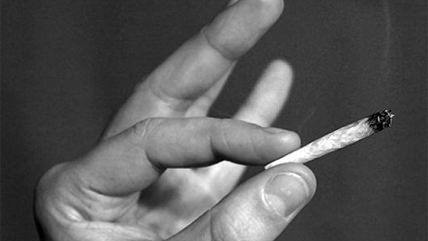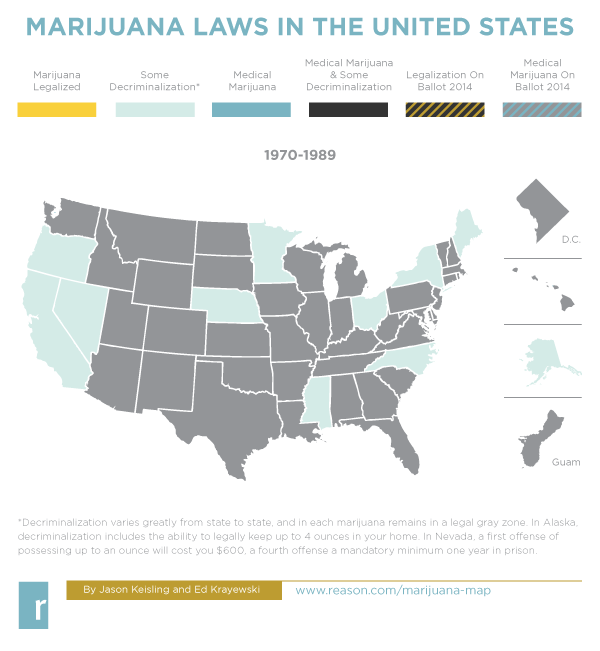Reversing Authoritarian Marijuana Laws: By Bill or by Ballot

The Controlled Substance Act, passed in 1970 and signed by President Nixon as a part of a "comprehensive" plan on drug abuse prevention, made marijuana an illegal substance in the United States, the culmination of decades of increased regulation and prohibition of marijuana and other narcotics around the country. Some states followed up federal efforts with draconian laws of their own, like New York, whose governor, Nelson Rockefeller, gave his name to some of the harshest anti-drug laws in the country. By 1978, New York and nine other states had set up some kind of decriminalization of marijuana—in Alaska via a state supreme court decision that found Alaskans had a right to privacy that protected using marijuana in the home but in other states via legislation.
But then nothing happened until a few states passed medical marijuana laws beginning in the late 1990s. Over the last decade, buoyed by a steady and significant shift in public opinion toward marijuana, several states have moved toward more decriminalization and, where pushed hardest by voters, to legalization. In 2012, voters in Washington and Colorado approved initiatives to legalize marijuana in the state. Tomorrow, voters in Oregon, Alaska and D.C. do, while voters in Florida and Guam vote on medical marijuana.
Check out the graphic below:

For larger still images, check out:


Show Comments (10)